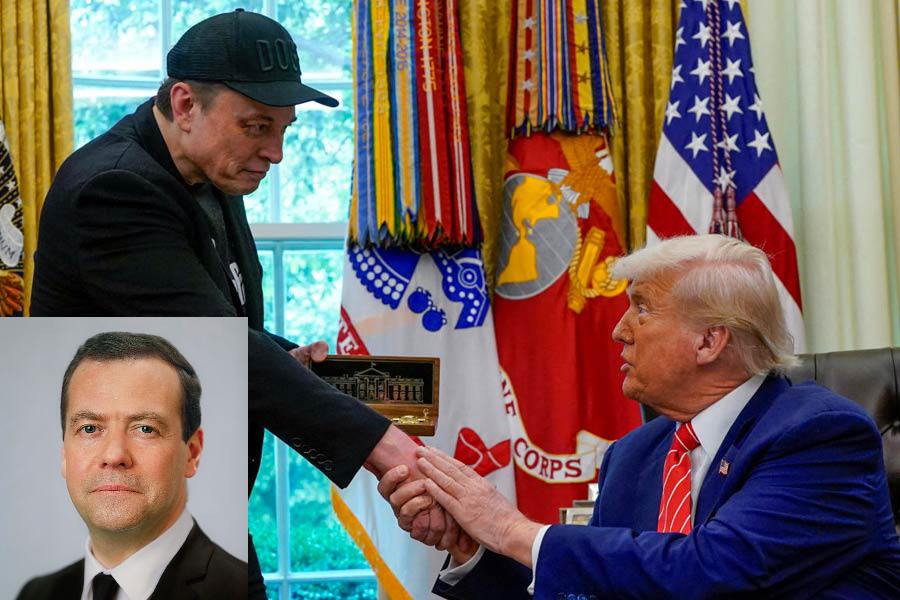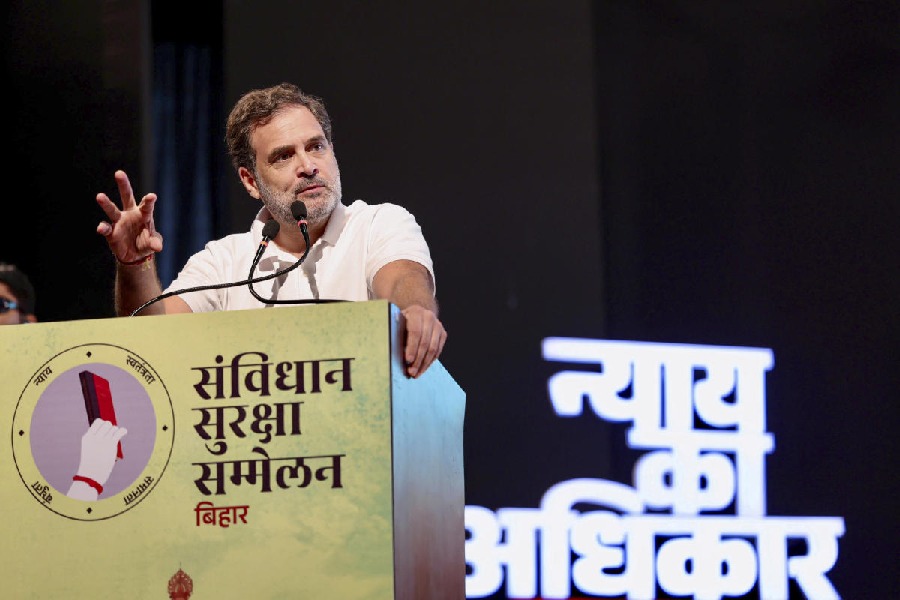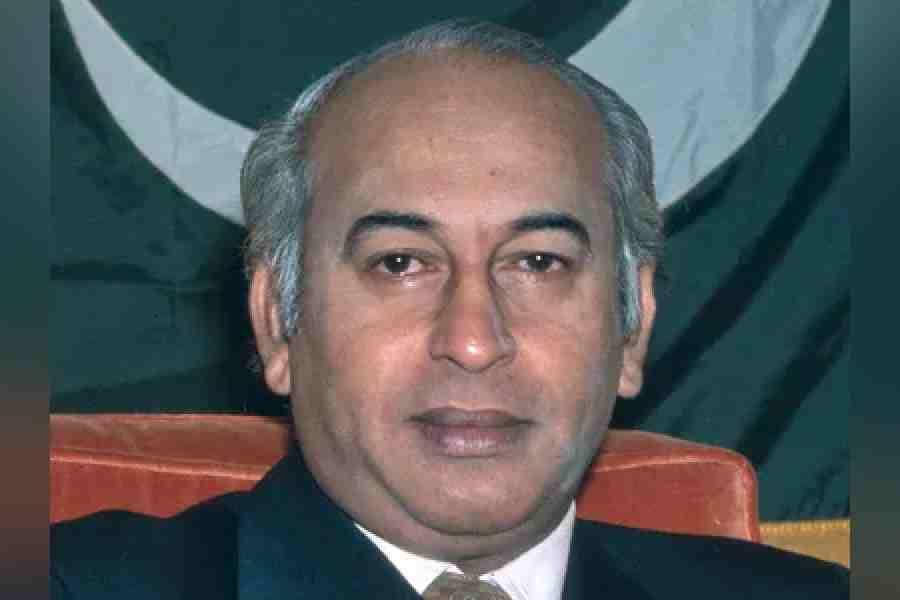Interview

Shiela Bora is a visiting lecturer with Gauhati University's departments of history and women's studies. She was professor and head with the department of history, Dibrugarh University, till her retirement. Her doctoral thesis 'Student Revolution in Assam 1917 to '47', was published in 1992. She taught at Harvard University from 1996 to 2000. Excerpts from an interview with Pranab Bora:
The Telegraph: A word on your doctoral thesis 'Student Revolution in Assam 1917 to 47'?
Shiela Bora: The year should have been 1916, when the Axom Satra Xonmiloni was set up in Assam. The publishers got it wrong. I conducted my research under late (Gauhati University vice-chancellor) Deba Prasad Barooah. I studied under teachers such as historian Heramba Kanta Borpujari...
TT: Compared to what the AASU has done in recent decades, would the stalwarts of the pre-Independence students' movement have done things differently had they been running the show now?
SB: The stalwarts then were constantly worried about the identity of the Assamese people and their language. Along with the national movement, they were running a parallel movement to save the cultural identity of the Assamese people. So had they seen the crisis of the current times, I really don't know if they would have reacted any differently because this is a real crisis. But one thing is for sure - had the old leadership led the movement now, the kind of violence that we have seen in recent times would not have been there.

TT: How important is politics to the student of Assam?
SB: Students of Assam have always had to be in the forefront of politics, goading the older leaders to take action. During the 1921 Non-cooperation Movement, Assam's moderate-minded Congress leadership, headed by people such as Nabin Chandra Bordoloi and Tarun Ram Phukan, had to be pushed into action by young Assamese students such as Omiyo Kumar Das, Chandranath Sarma and Tyagbir Hem Chandra Barua. The same holds true of the 1930 Civil Disobedience movement, when the political leadership here wasn't willing to participate, saying Assam had no coastline and hence no salt laws to violate.
In 1930, the Raj issued the Cunningham circular that asked parents in Assam to guarantee the government that their wards would not take part in politics. This galvanised the students, who not only prevented their parents from signing the circular but also dived headlong into the movement by picketing schools and colleges.
It was the students of Assam who set up the Axomiya Bhaxar Unnati Xadhini Xobha in 1916 for the advancement of the Assamese language and its literature. After Assamese was abolished as the medium of instruction in 1836 in the schools and courts of Assam on grounds that it was a colloquial form of Bengali without any independent roots, it was Assam's students who fought along with people like Anandaram Dhekial Phukan till Assamese was reintroduced in 1873. It was left to Assamese students to publish science books such as Bigyan Rahasya so that Assamese could be taught in all levels of education...
TT: And the genesis of politics in the Assamese student's way of life?
SB: The Xonmiloni's constitution in 1916 debarred members from even discussing politics. However, in 1918, even as the Montague-Chelmsford Reforms were going to take place, the session of the Xonmiloni presided over by Padmanath Gohain Baruah in 1918 questioned the basis of this condition. Gohain Baruah, who, however, did not encourage lathi and swordplay that was prevalent during the time, said: "We cannot keep students away from politics". The ban on participation in politics was finally removed in 1928.
TT: A bit of the history of the Xonmiloni...
SB: The Xonmiloni was affiliated to the All India Students' Federation (AISF) in 1937 and Gauri Shankar Bhattacharjee was elected its first general secretary. After the affiliation, though it was formally known as the Assam Students' Federation (ASF), it was still referred to as the Axom Satra Xonmiloni. The AISF, however, split in its Nagpur session in 1940, leading to a split in the ASF as well. The moderate group then continued to be known as the ASF while the other, which became more Communist dominated, came to be known as the Assam Provincial Students' Federation. After the 1942 Quit India Movement, the ASF became a part of the All India Students' Congress and came to be known as the All Assam Students' Union from 1946. But this is not to be mistaken as the AASU of today. The AASU of today was born only in 1967, with a new constitution.
TT: What is the legacy of the Axom Satra Xonmilani that you see in present times?
SB: The idea of preserving and protecting the Assamese language and community is definitely a legacy of the past. The influx issue was raised as early as in the eighth session of the Xonmiloni presided over by C.F. Andrews at Nagaon in 1922. The issue was always central to the activities of the student body in the pre-Independence era, so when the current AASU once again took it up, it was a legacy they were picking up from the past.
In 1923, the Xonmiloni had adopted a resolution that birth anniversaries of national heroes and heroines like Lachit Barphukan, Chilarai and Joymoti would be celebrated annually to remind people of their history. Though this legacy continues, the purpose and spirit of it has been lost and they have become more of community-based affairs.
The third legacy, I think, is the existence of an independent Muslim students' organisation in the form of the Muslim Students' Conference that was founded in 1918, later known as the Assam Provincial Muslim Students' Federation. Though some members were common to the Satra Xonmiloni and the Muslim Conference, they justified the need for a separate Muslim organisation saying they believed that the Xonmiloni wasn't paying enough attention to their religion and language.
TT: Are there areas where you disagree with the current AASU?
SB: There seems to have been a lack of good advisers to the current AASU. They and the Centre ended up signing an Assam Accord many points of which were hurried and haphazard and could not be implemented. The Assam Agitation, which we supported wholeheartedly in the beginning, later turned violent and we lost interest. In the 1970s, AASU leaders such as Lalit Rajkhowa would meet me often while I was researching at the National Archives in Delhi. Things changed though. Slowly, they were interested, in a very narrow manner, only in the Assamese community and thus alienated everyone else.
After the AGP came to power, Prafulla Mahanta even sidelined those who initially were his guardians and advisers. Also I don't think the AASU's leadership follows through issues till the end with the intent they are meant to. And their leaders are seen driving around in big SUVs, which is something we don't like as teachers...
Also, even if Sammujjal Bhattacharjya disagrees, I would like to emphasise that there are no women signatories to the 1985 Assam Accord, and there are no important women office-bearers in the AASU, though so many women marched along with the men and died in great numbers.










